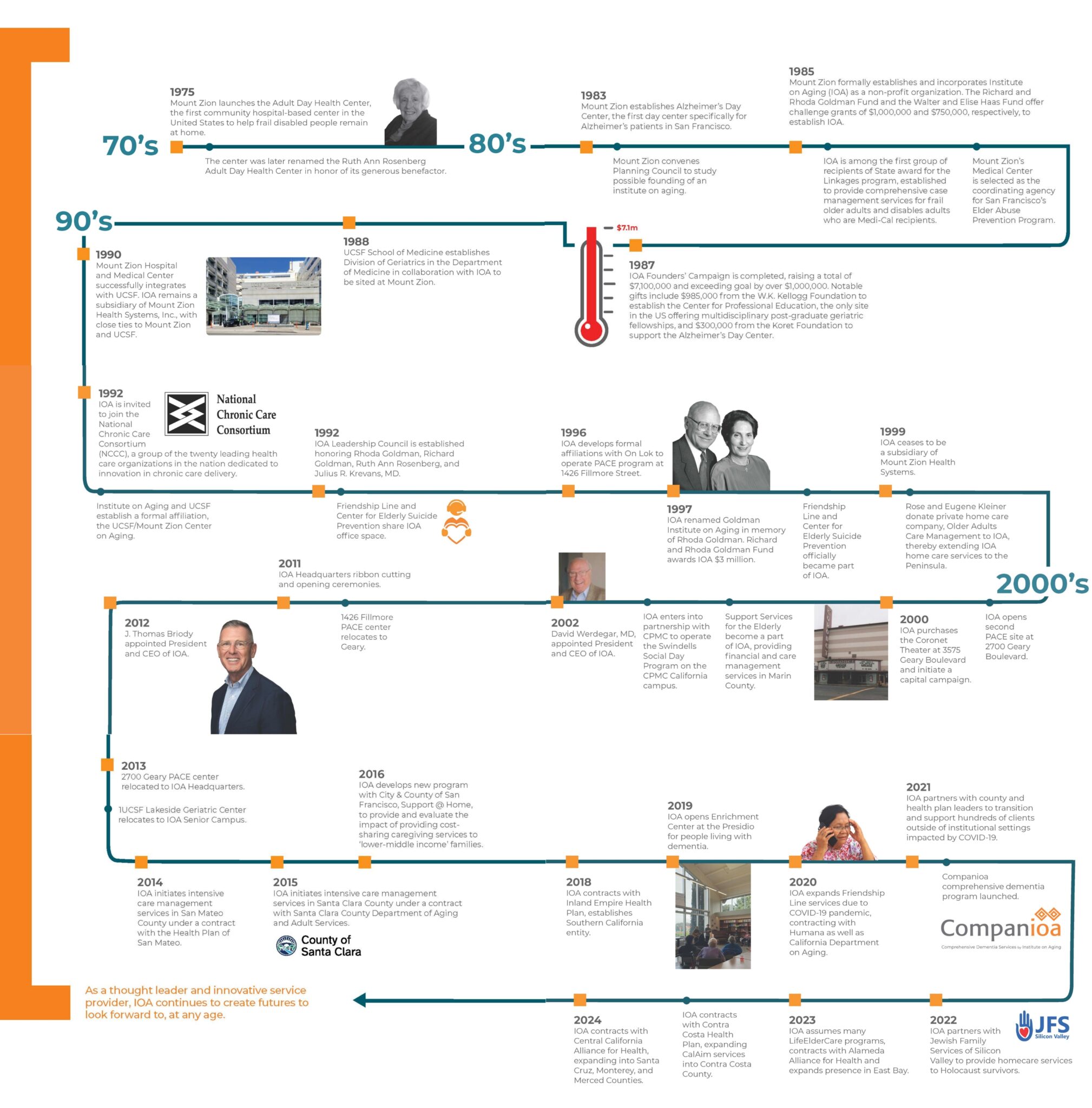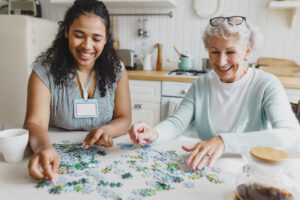Just south of the iconic Golden Gate Bridge lies Geary Boulevard, where Institute on Aging (IOA) offices have stood with open doors welcoming all for over four decades.
We didn’t appear overnight, however, but as the result of steady growth from seeds first planted nearly a century ago.
By looking back at our history, we both honor the efforts of past leaders who made IOA possible while helping define and carry our values, mission, and heritage to clients with us today and those who need us tomorrow.

Overcoming Early Limitations
In the late 19th century, the social landscape of San Francisco was not yet the accepting one we know and love today. Segregation was still the norm, with vital facility access limited by cultural lines and no hospital in which Jewish people were accepted.
In response, the local Jewish community banded together to build the Mount Zion Hospital in 1887—welcoming all those who did not feel like they had a place elsewhere—regardless of their social status, beliefs, or financial resources.
Others took notice, and soon, other marginalized groups requested and received access. As healthcare became more accessible for all, the community flourished, but much work remained to be done in the space of effective, empathetic care for older adults.
Inspiration from Abroad
As the years passed by, the inclusive umbrella of Mount Zion Hospital continued to grow, but gaps in the broader healthcare system became identified. In the 1970s, Dr. Feigenbaum observed that an alarming number of older adults were being pushed into hospitals and nursing homes, not because it was the best option but due to a lack of viable alternatives.
Many institutions were fostering dependencies on medical services that didn’t fully support the well-being of older adults. Instead, there was an opportunity to keep people engaged in the joys of life, reserving medical intervention for when it’s truly necessary.
Dr. Feigenbaum sought to change that. With the support of Rhoda Goldman, a Mount Zion Hospital board member, he was given the means and an ideal opportunity to do so. Traveling to Great Britain, Dr. Feigenbaum observed how their communities supported older adults and how this affected their quality of life.
At home, Rhoda Goldman launched a “Blue Ribbon Task Force” gathering the best minds from around the country with a two-fold mission: understand why San Francisco hospitals and nursing homes were so overcrowded and what it would take to enable older adults to continue living at home.
Research Findings and the Founding of IOA
Both Dr. Feigenbaum’s travels and Goldman’s study came to similar results that astounded them and laid the foundation from which IOA, as we know it today, grew: that compassionate, community-based services and social programs provide older adults with a sense of invigoration. A revitalization that encourages and enables them to live how they choose from the comfort of home for far longer than previously thought.
However, within San Francisco at the time, there simply weren’t enough community programs designed specifically for older adults. The Mount Zion Hospital formed Institute on Aging to address this need directly.
Expansion and Independence
Soon, the local demand spurred a bold decision to be made. In 1985, Institute on Aging became an autonomous non-profit organization separate from Mount Zion Hospital to focus entirely on empowering older adults to live independently.
From these roots, IOA spread deep and far beyond its local beginnings to a teeming network connecting untold thousands across generations. Supported by generous contributions from local philanthropists and diverse communities, these resources have expanded our reach and evolved our capabilities with new staff, technologies, and practices based on the research of our time.
Yet throughout this growth, the heart of IOA’s heritage to help those in need—the overlooked and all too often left behind—has remained unchanged and true to our original values and vision.
The Modern Vision and Mission of IOA
We continue to build each day upon the framework first set by the communal effort of the Jewish community who founded Mount Zion Hospital, the continued research of Dr. Feigebaum and Rhoda Goldman, and the countless others who have contributed to our community.
The history of IOA is a testament to the power of inclusivity, resilience, and independence. Proof that when a community connects, all stand to benefit. That joy and life fulfillment can continue through any age, disease, or disability. Conversations, shared activities, and other moments where lives intersect are vital and should remain open to all who seek them.
Fostering compassion throughout our community is why IOA was first created and why we still exist. To strengthen our clients through connection. To serve all equally, as we did at our onset, and continue to proudly do so to this day.







